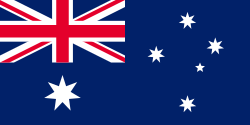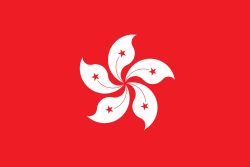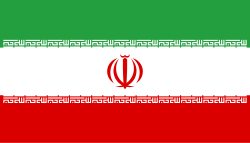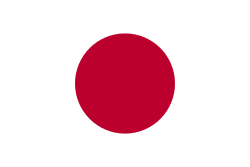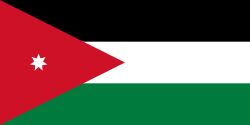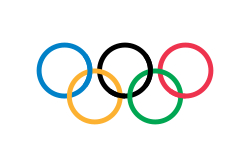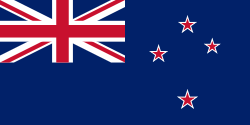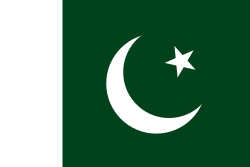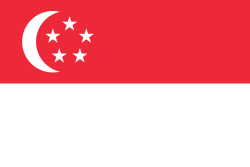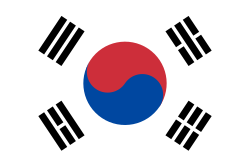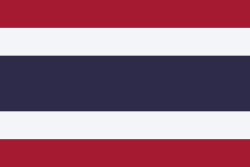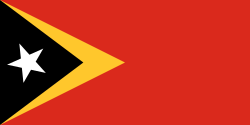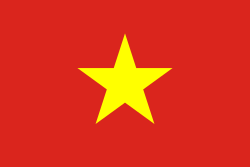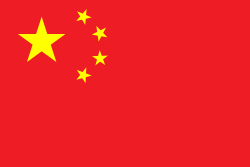Winter-Asienspiele 2017
| Austragungsort: | Sapporo, Japan |
| Eröffnungsfeier: | 19. Februar 2017 |
| Schlussfeier: | 26. Februar 2017 |
| Disziplinen: | 5 |
| Wettkämpfe: | 64 in 11 Sportarten |
| Länder: | 32[1] |
| Athleten: | 1101 |
| ← Astana/Almaty 2011 | |
| Harbin 2025 → | |
Die 8. Winter-Asienspiele waren eine multinationale Sportveranstaltung. Sie fanden vom 19. bis 26. Februar 2017 in Sapporo und Obihiro statt. In Sapporo waren bereits 1986 und 1990 die ersten zwei Winter-Asienspiele ausgetragen worden.[2]
Teilnehmerländer
An den Winter-Asienspielen 2017 nahmen Sportler aus 32 Ländern teil. Neben 30 asiatischen NOCs waren auch Australien und Neuseeland eingeladen. Sportler des suspendierten Nationalen Olympischen Komitees Kuwait traten als Unabhängige Olympische Athleten unter der Flagge des Internationalen Olympischen Komitees IOC an.[1]
 Australien
Australien Chinesisch Taipeh
Chinesisch Taipeh Hongkong
Hongkong Indien
Indien Indonesien
Indonesien Iran
Iran Japan
Japan Jordanien
Jordanien Kasachstan
Kasachstan Katar
Katar Kirgisistan
Kirgisistan Athleten aus Kuwait
Athleten aus Kuwait Libanon
Libanon Macau
Macau Myanmar
Myanmar Mongolei
Mongolei Nepal
Nepal Neuseeland
Neuseeland Nordkorea
Nordkorea Pakistan
Pakistan Philippinen
Philippinen Singapur
Singapur Sri Lanka
Sri Lanka Südkorea
Südkorea Tadschikistan
Tadschikistan Thailand
Thailand Osttimor
Osttimor Türkei
Türkei Usbekistan
Usbekistan Vereinigte Arabische Emirate
Vereinigte Arabische Emirate Vietnam
Vietnam Volksrepublik China
Volksrepublik China
Sportarten
- Biathlon (Ergebnisse)
- Curling (Ergebnisse)
- Eishockey (Ergebnisse)
- Eiskunstlauf (Ergebnisse)
- Eisschnelllauf (Ergebnisse)
- Freestyle-Skiing (Ergebnisse)
- Shorttrack (Ergebnisse)
- Ski Alpin (Ergebnisse)
- Skilanglauf (Ergebnisse)
- Skispringen (Ergebnisse)
- Snowboard (Ergebnisse)
Wettkampfanlagen
- Eröffnungsfeier: Sapporo Dome (Sapporo)
- Biathlon: Nishioka-Biathlonstadion (Sapporo)
- Curling: Sapporo Curling Stadium (Sapporo)
- Eishockey: Tsukisamu-Sporthalle, Mikaho-Sporthalle, Hoshioki Ice Skating Rink (alle in Sapporo)
- Eiskunstlauf: Makomanai-Hallenstadion (Sapporo)
- Eisschnelllauf: Obihiro Forest Speed Skating Oval (Obihiro)
- Freestyle-Skiing: Sapporo Bankei Ski Area (Sapporo)
- Shorttrack: Makomanai-Hallenstadion (Sapporo)
- Ski Alpin: Sapporo Teine (Sapporo)
- Skilanglauf: Shirahatayama Open Stadium (Sapporo)
- Skispringen: Ōkurayama-Schanze, Miyanomori-Schanze (beide in Sapporo)
- Snowboard: Sapporo Teine, Sapporo Bankei Ski Area (beide in Sapporo)
- Schlussfeier: Makomanai-Hallenstadion (Sapporo)
Medaillenspiegel
| Rang | Land | Gold | Silber | Bronze | Total |
|---|---|---|---|---|---|
| 1 | 27 | 21 | 26 | 74 | |
| 2 | 16 | 18 | 16 | 50 | |
| 3 | 12 | 14 | 9 | 35 | |
| 4 | 9 | 11 | 12 | 32 | |
| 5 | 0 | 0 | 1 | 1 | |
| Gesamt | 64 | 64 | 64 | 192 | |
Weblinks
Einzelnachweise
- ↑ a b OCA welcomes record number of teams, athletes to Sapporo 2017. Olympic Council of Asia, 17. Februar 2017, archiviert vom (nicht mehr online verfügbar) am 19. August 2017; abgerufen am 19. August 2017 (englisch).
- ↑ About 2017 Sapporo Asian Winter Games. 8th Sapporo Asian Winter Games Organising Committee, 14. November 2016, archiviert vom (nicht mehr online verfügbar) am 12. Juli 2017; abgerufen am 19. August 2017 (englisch).
Auf dieser Seite verwendete Medien
Flag of Australia, when congruence with this colour chart is required (i.e. when a "less bright" version is needed).
See Flag of Australia.svg for main file information.Chinese Taipei Olympic Flag. According to the official website of Chinese Taipei Olympic Committee, Blue Sky(circle) & White Sun(triangles) above the Olympic rings is neither the National Emblem of the Republic of China, nor the Party Emblem of Kuomintang (KMT), but a design in between, where the triangles do not extend to the edge of the blue circle, as registered at International Olympic Committee in 1981 and digitally rendered in 2013. Besides, the blue outline of the five-petaled plum blossom is broader than the red one. Moreover, the CMYK code of the blue one and the Blue Sky & White Sun is "C100-M100-Y0-K0", and different from the Olympic rings (C100-M25-Y0-K0). Note that it's the only version recognized by IOC.
Chinese Taipei Olympic Flag. According to the official website of Chinese Taipei Olympic Committee, Blue Sky(circle) & White Sun(triangles) above the Olympic rings is neither the National Emblem of the Republic of China, nor the Party Emblem of Kuomintang (KMT), but a design in between, where the triangles do not extend to the edge of the blue circle, as registered at International Olympic Committee in 1981 and digitally rendered in 2013. Besides, the blue outline of the five-petaled plum blossom is broader than the red one. Moreover, the CMYK code of the blue one and the Blue Sky & White Sun is "C100-M100-Y0-K0", and different from the Olympic rings (C100-M25-Y0-K0). Note that it's the only version recognized by IOC.
bendera Indonesia
Flagge des Irans. Die dreifarbige Flagge wurde 1906 eingeführt, aber nach der Islamischen Revolution von 1979 wurden die Arabische Wörter 'Allahu akbar' ('Gott ist groß'), in der Kufischen Schrift vom Koran geschrieben und 22-mal wiederholt, in den roten und grünen Streifen eingefügt, so daß sie an den zentralen weißen Streifen grenzen.
Olympische Flagge
Die Flagge von Nepal mit rechtem Rand (Seitenverhältnis 3:4)
Logo of Olympic Council of Asia

